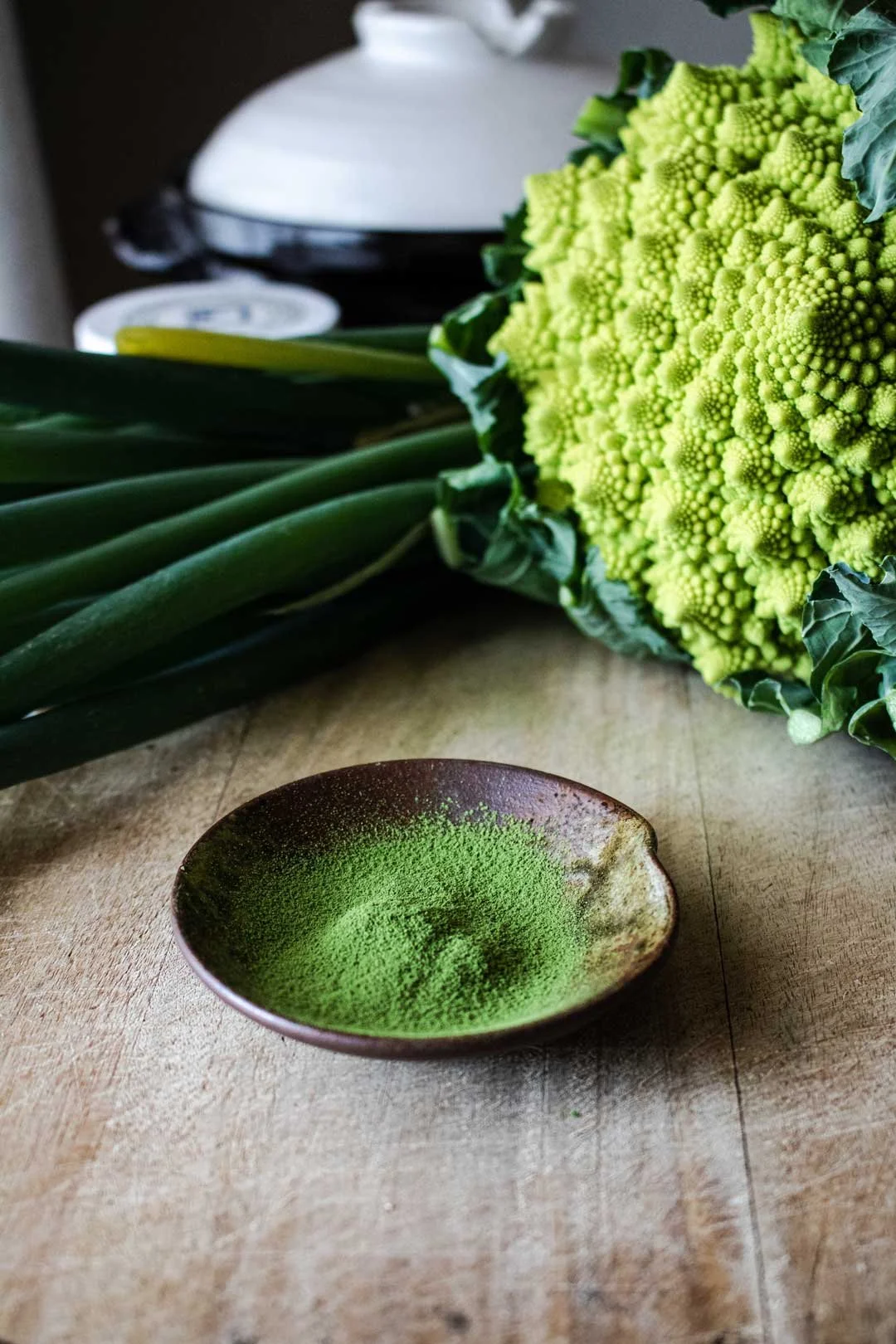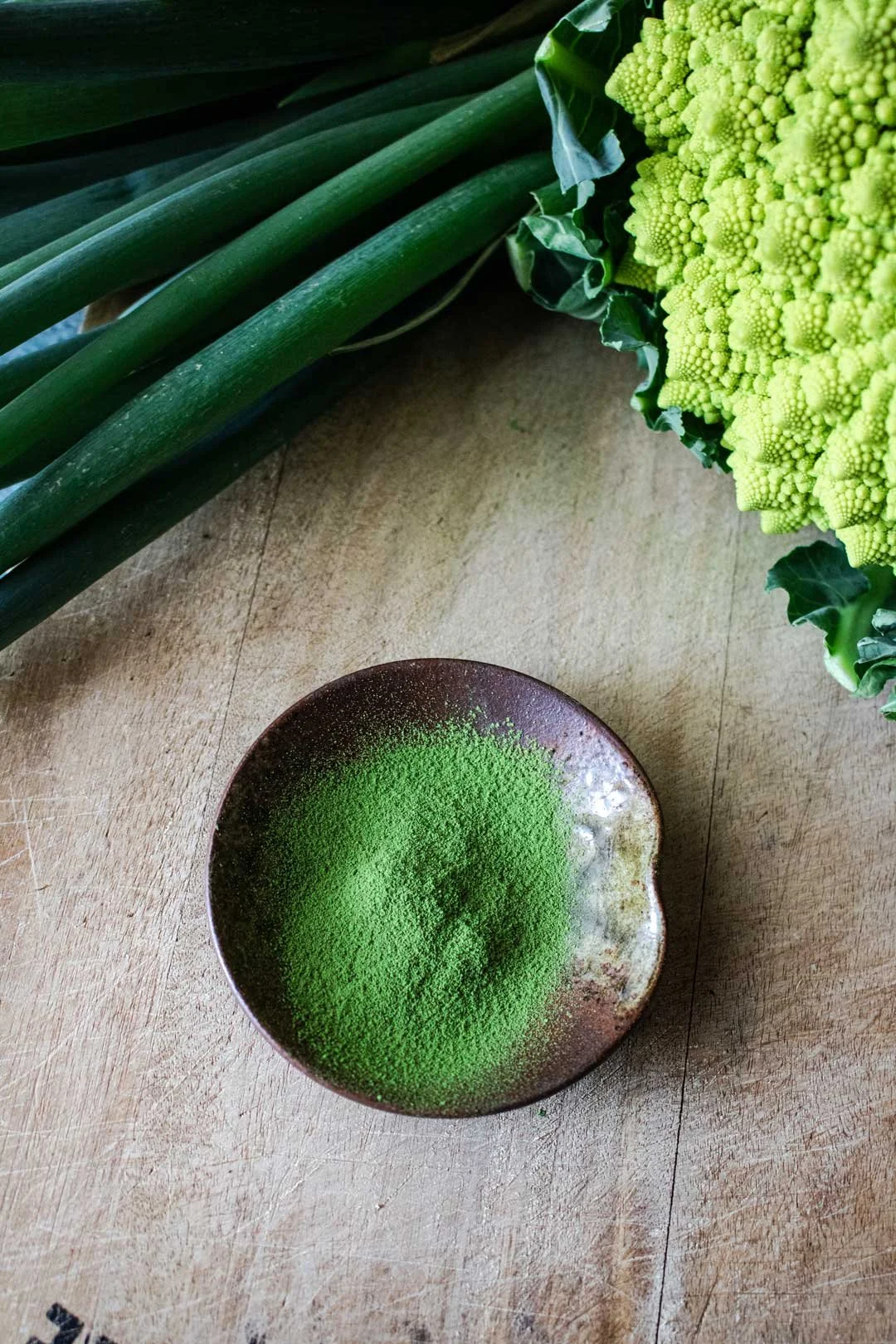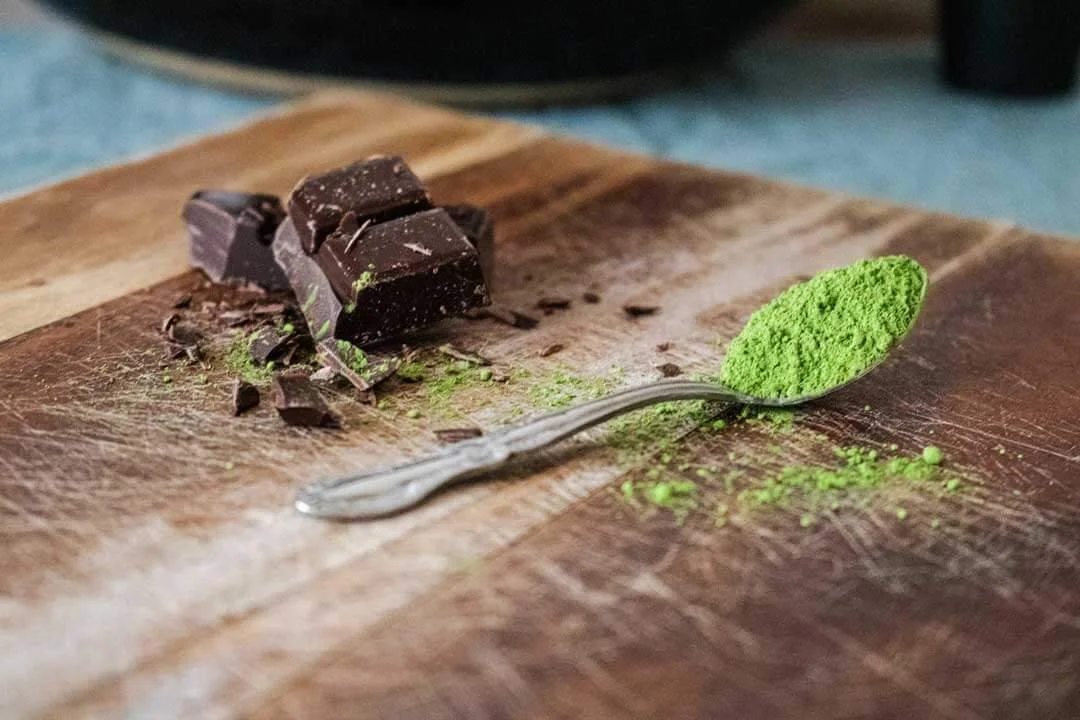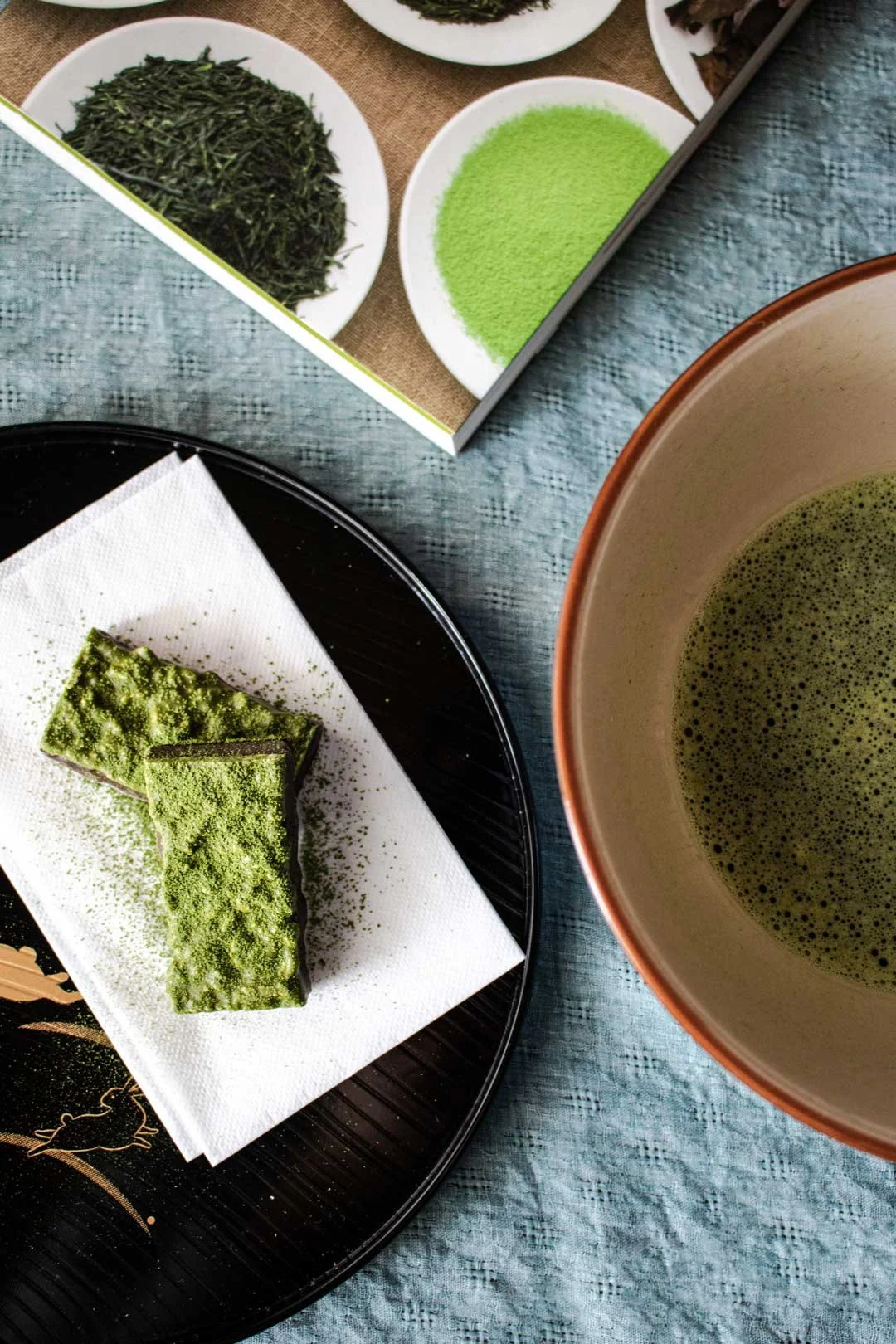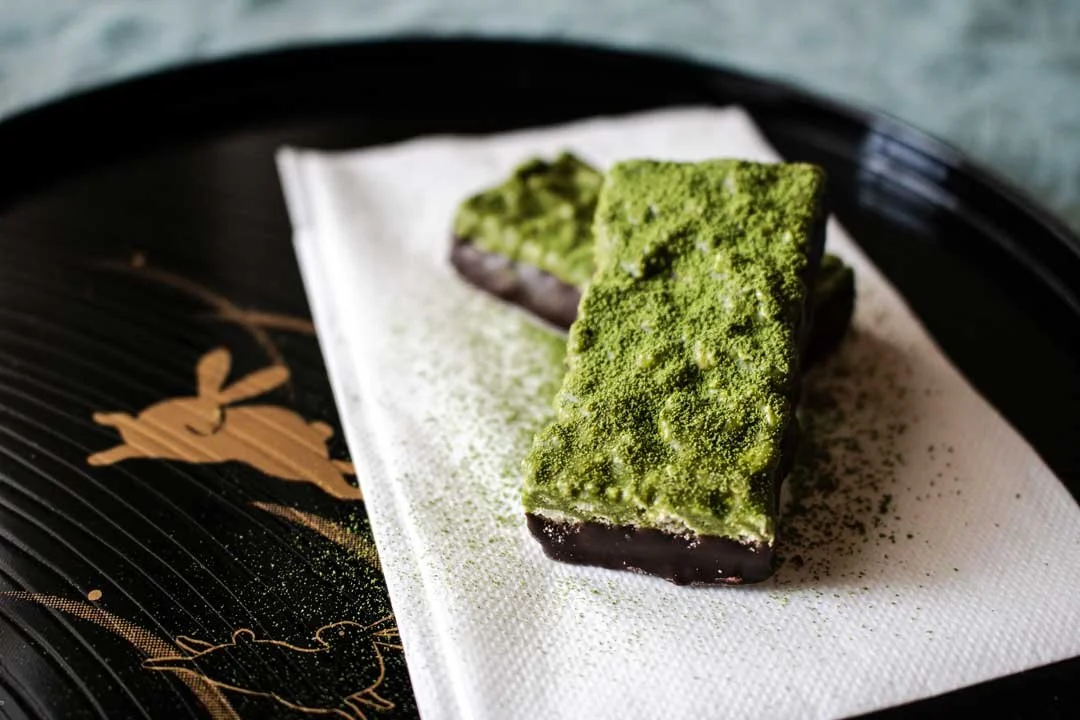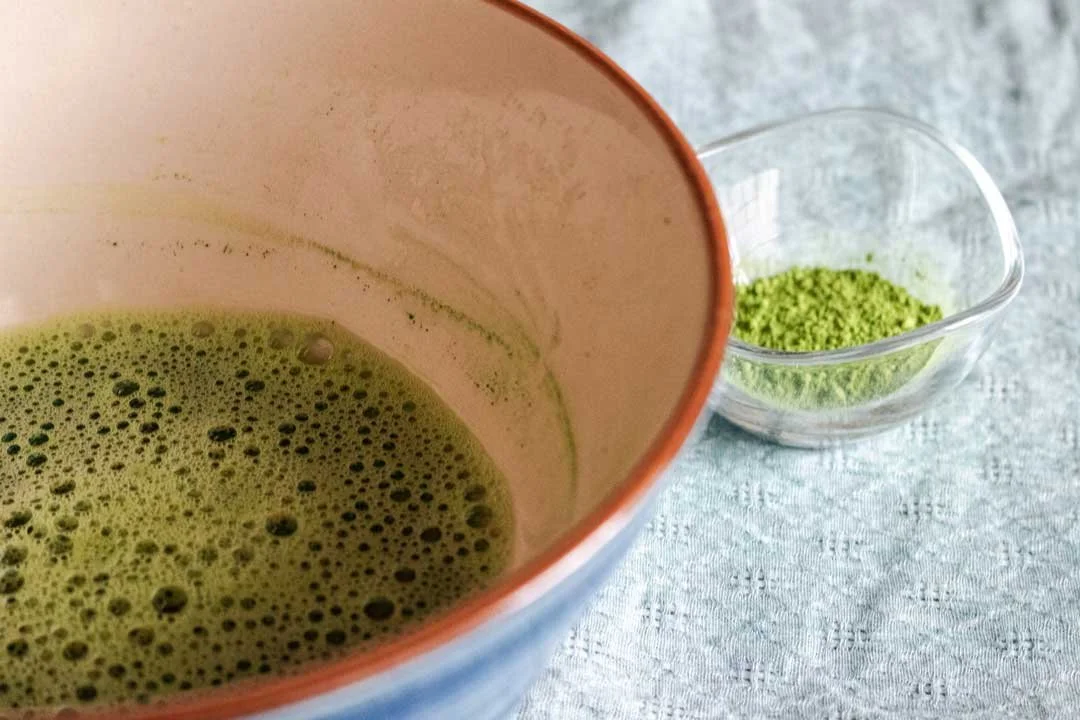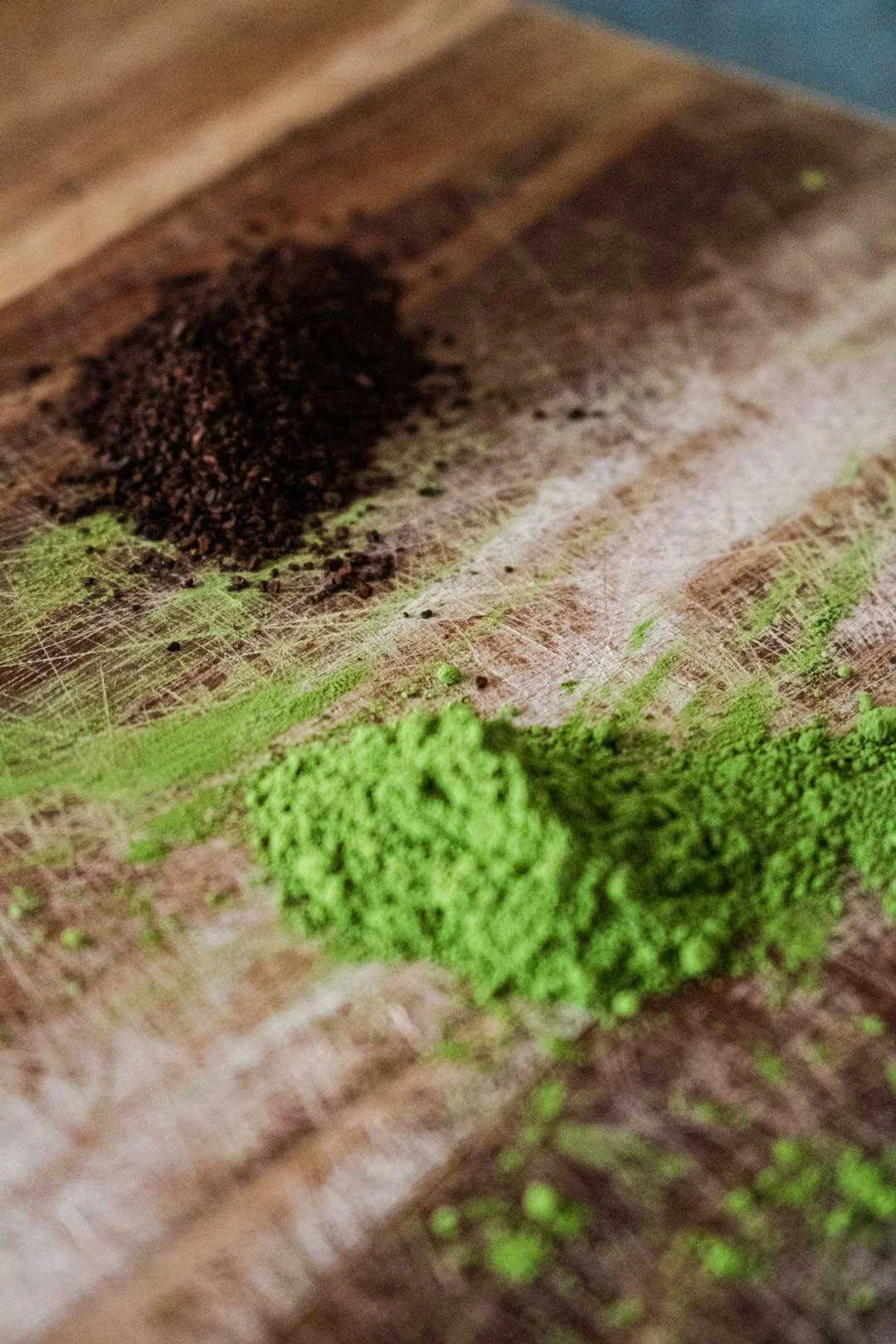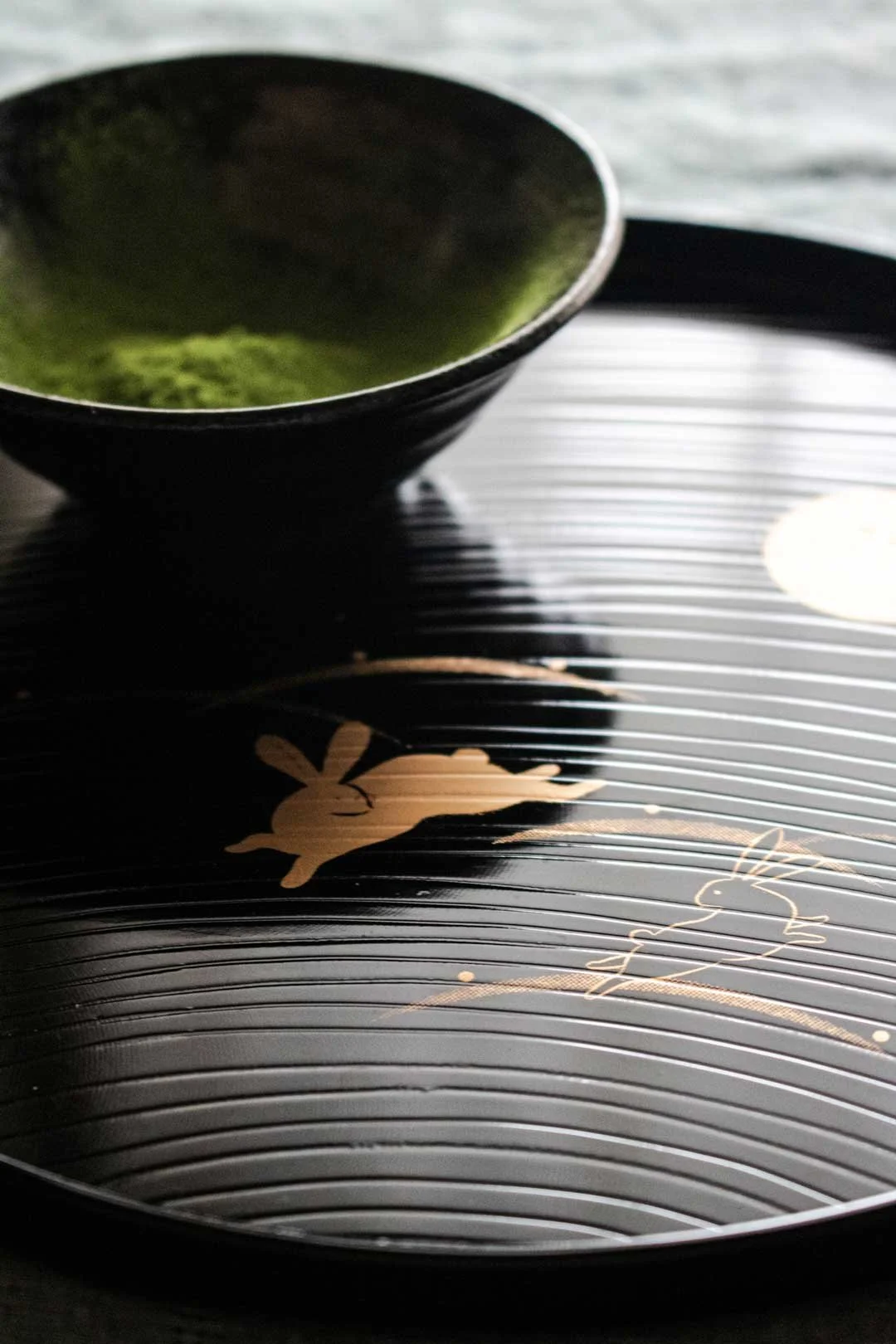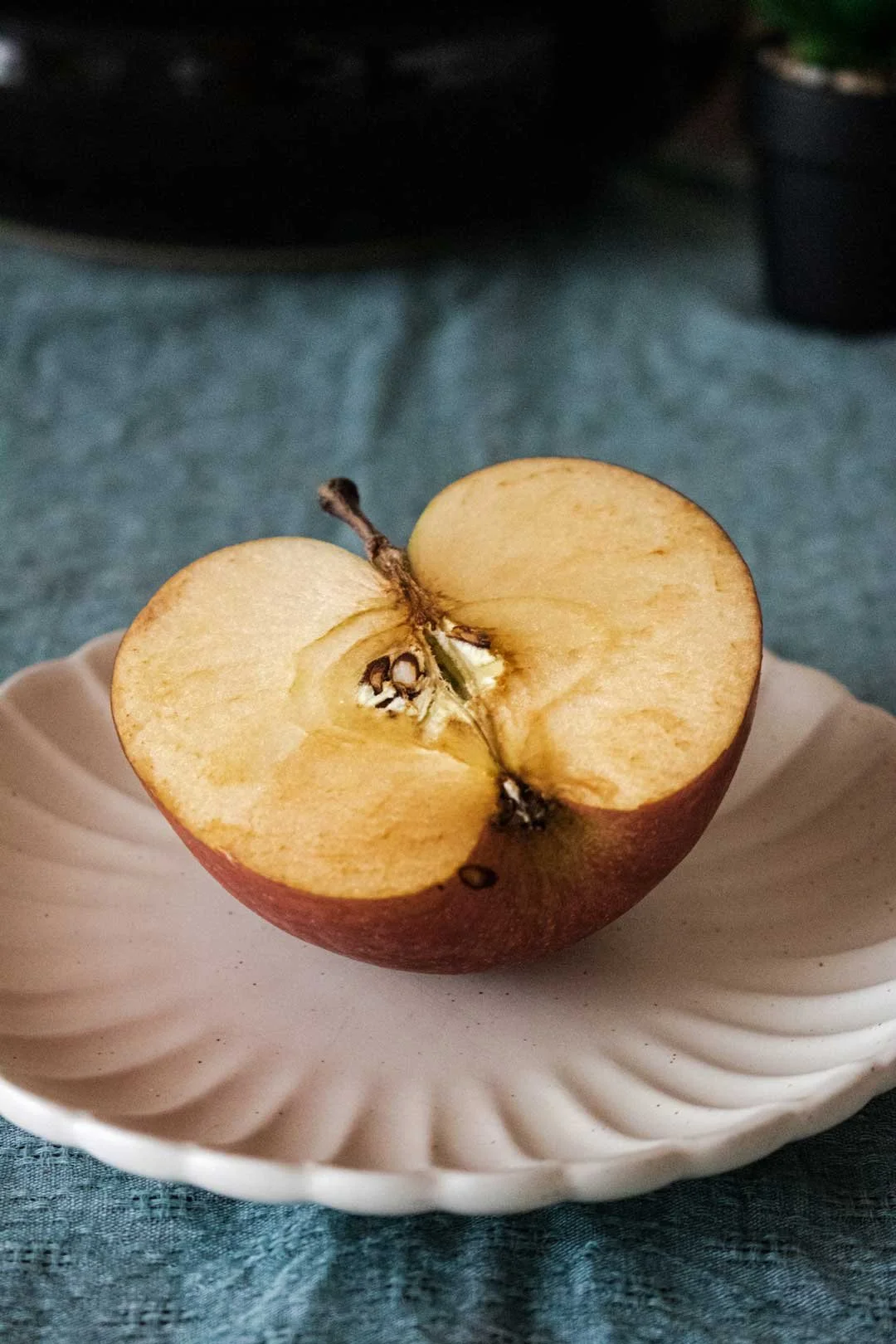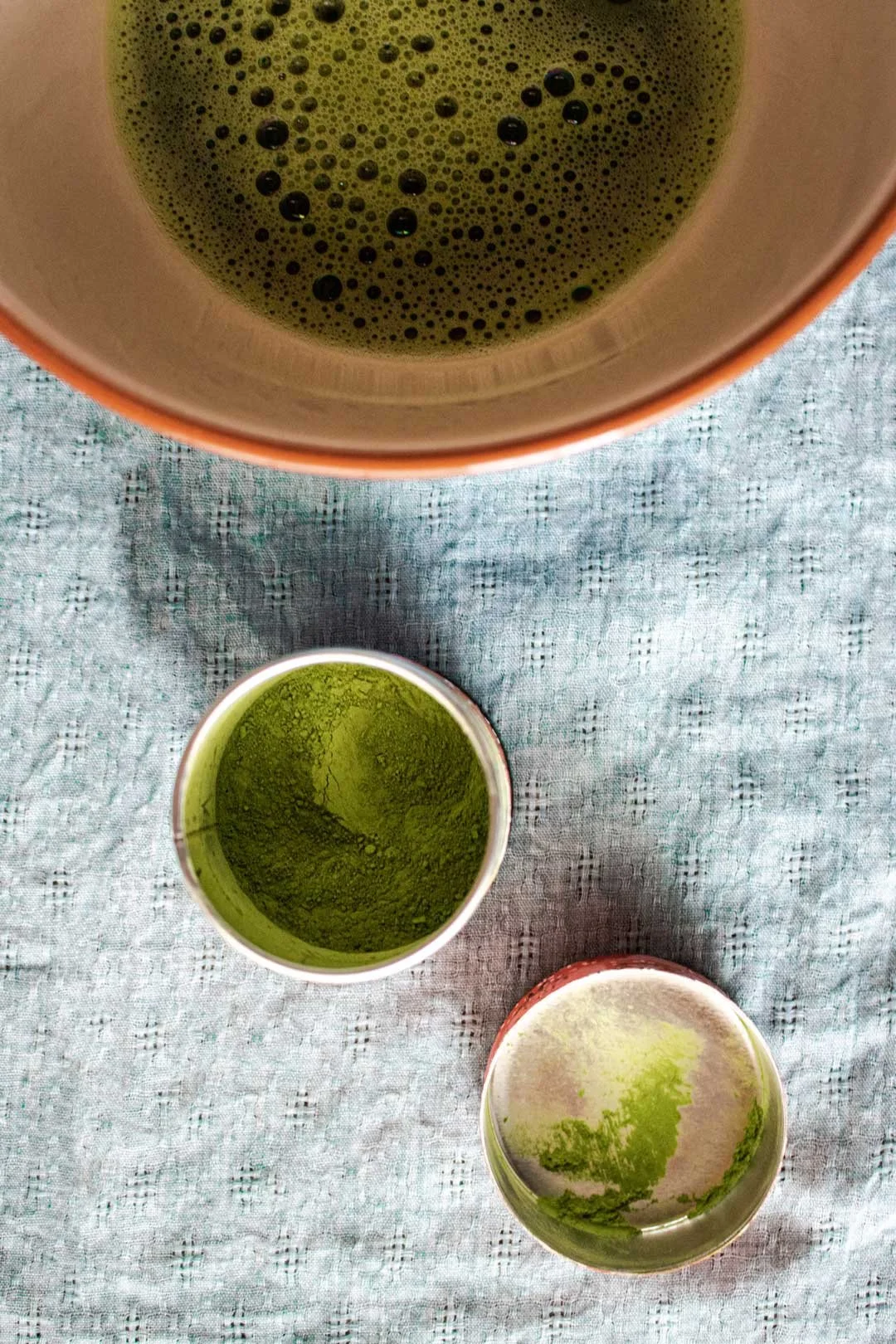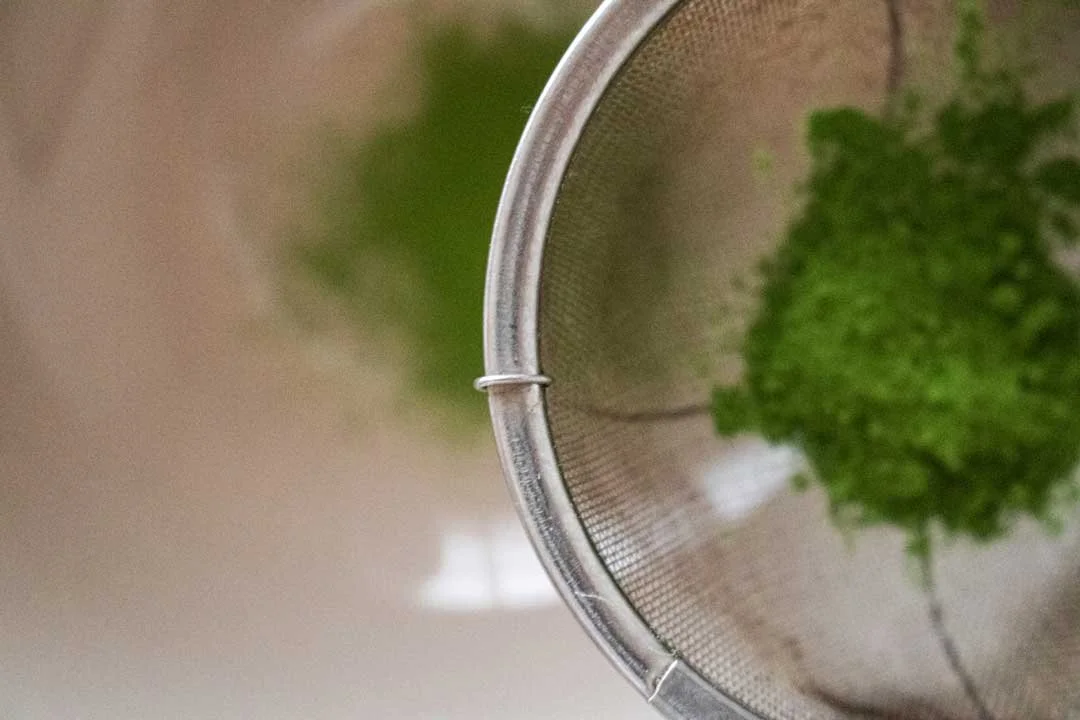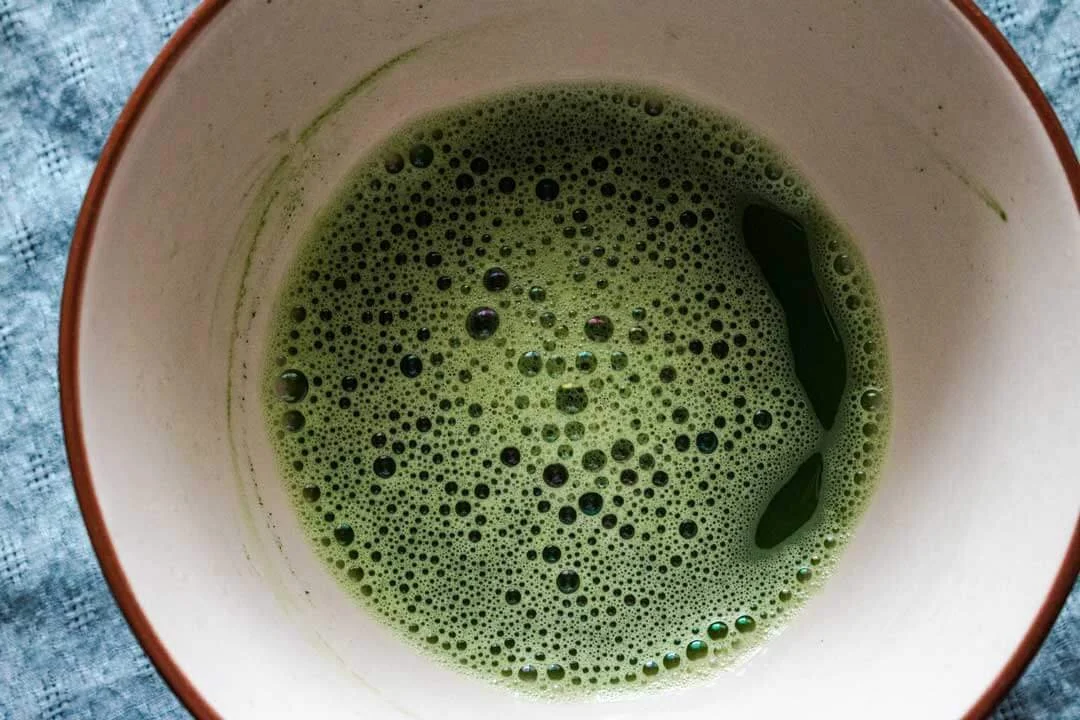Why Does Matcha Taste Bad?
The first time I made matcha, it didn’t taste so bad... (actually, scratch that—it was super bitter and tasted horrible.)
But why does matcha taste bad?
I know now that my first cup of matcha was bad because I used boiling water to prepare it.
Of course, there are many possible reasons why your matcha could taste off.
Maybe you made a mistake when preparing it, just like me.
Maybe your matcha was simply a bit old or not the best quality.
It’s not easy to know for sure what went wrong…
That’s why I wrote this article.
If you want to make sure every single matcha bowl you prepare tastes delicious, keep reading.
You are going to learn:
What do good and bad matcha taste like?
5 reasons why matcha tastes bad.
Quick and easy solutions to make your matcha taste better.
Let’s go!
The Taste of Matcha
So, why does matcha taste bad?
Before I can answer this question, there is another one I want to ask: do you know what matcha is supposed to taste like?
Because not liking tea due to personal taste is a thing.
But not liking a tea due to quality or preparation issues is another.
So you need to know the difference.
What Does Matcha Taste Like?
Overall, most matcha tastes fresh and vegetal, just like green vegetables.
The tea has a smooth and velvety texture.
Once you swallow the first sip, a pleasant savory aftertaste will follow.
This savory taste is called umami in Japanese.
You might also experience some lingering bitterness, sweetness, or earthiness.
Matcha’s flavor profile is influenced by various factors (kind of varietal, growing, and processing methods…)
Different growing locations will give you different tasting matcha.
This concept is called Terroir.
Does Matcha Actually Taste Good?
Matcha’s tastiness is influenced by a number of factors such as:
Growing location.
The quality of its processing.
Degree of freshness.
How it’s prepared before being consumed.
What is sure is that high-quality matcha, if well stored and well prepared, will taste good. Of course, it also depends on your personal taste.
Getting to Meet the Real Thing
Nowadays people often drink heavily sweetened teas and lattes.
All they know really is the taste of sugar…
So when they drink their very first sip of matcha, it tastes foreign on their tongues.
You can get a bit lost in all those complex flavors.
Matcha doesn’t need sugar to taste delicious.
It’s a bit like dark chocolate.
It tastes totally different from white or milk chocolate.
But once you get a bite, you might find yourself wanting more.
Don’t Be Afraid of Bitterness
There is this idea that matcha is very bitter.
But the thing is matcha tastes bright and green before all.
Any bitterness should only be subtle.
If the bitterness is overpowering, something, somewhere, went wrong.
Don’t worry though, I will get to the ¨why¨ very soon.
Good Matcha vs Bad Matcha
How do you recognize good matcha from bad?
Here are a few key pointers:
Taste: vegetable, savory
Aroma: pleasant, fresh
Color: vividly green
Part of this comes from the growing process…
The tea plants are shaded for a few weeks before harvesting.
It increases the amount of chlorophyll in matcha and gives it this beautiful green color present in most plants.
Shading also reduces the bitterness of the tea leaves.
That is why good quality matcha has a mellow, umami flavor.
On the other hand, low-quality matcha might taste quite bitter.
You can see a clear difference in color too.
It will be a yellowish-green color, very dull compared to superior quality matcha.
Ceremonial Grade Matcha vs Culinary Matcha
I used terms like ¨bad matcha¨ or ¨good matcha¨ before.
In reality, it’s not so much about being good or bad.
It has more to do with what you do with it.
On one side you have culinary matcha.
It’s a way of flavoring and coloring all kinds of sweets like cakes or cookies.
It can also be used to make sweetened lattes and smoothies.
In short, it’s mostly used for sweet recipes.
Why? Because culinary matcha is usually a tea of low to medium quality.
It means two things:
It is way cheaper than matcha for drinking
It has a more prominent bitterness to it
But the bitterness lessens greatly when combined with sugar, so it’s not a problem in this case.
To go deeper, read our dedicated article Ceremonial VS Culinary Matcha.
Quick tip: Higher quality matcha would be lost in your Matcha Latte, so the lower quality “culinary” grade is actually preferential!
On the other side, you have what is called ceremonial grade matcha.
Generally speaking, it refers to matcha that is good enough to be served during Chanoyu (Japanese tea ceremony).
However, I wouldn’t attach too much importance to this term if I were you.
There are no clear required standards for matcha to have the title ceremonial grade.
In the end, any company can write it down on its packaging.
Matcha is in high demand and not everyone will take the time to verify the claim.
So if you find a suspiciously cheap ¨ceremonial grade¨ matcha… Chances are it’s not that great.
With that said, let’s go through 5 reasons your matcha tastes bad:
1. Quality Issues when Matcha is Grown or Harvested
I briefly mentioned the word Terroir earlier.
The Terroir (aka the growing location) of a tea will inevitably alter its taste.
For example:
Matcha from Uji has a pronounced grassy taste with umami notes.
Matcha from Kagoshima is a combination of green, sweet, bitter, and umami flavors.
When talking about the growing process, there are 2 things that influence the final taste of a tea:
The microclimate (soil, irrigation, altitude, weather, temperatures…)
The type of cultivar (specific cultivated variety of tea) used.
And like France has well-known grape-producing regions to make wine (Bordeaux, Loire); Japan has matcha-producing regions which make better tea (Uji, Nishio, Yame).
Different, Not Bad
Matcha from other regions of Japan isn’t bad.
But knowing those well-known regions will help you select the best tea.
One last thing: other tea-producing countries like China also sell matcha. However, matcha has to come from Japan.
The Shading of the Tea Plants
Matcha’s production method is unique.
Farmers purposely cover the tea bushes for about 3 to 4 weeks before harvesting.
This shading process is to prevent certain amino acids (theanine, glutamic acid) present in the leaves to change into chatecins.
Those amino acids are responsible for matcha’s distinct umami taste, while chatecins are responsible for bitterness.
So this step is very important.
Incomplete or incorrect shading could lead matcha to drop from high to medium/low quality.
Harvesting Time
Another important point is the harvesting time.
In Japan, tea leaves are harvested about four times a year.
The first tea of the year (ichibancha) is usually harvested in early May.
And it is the best time to make matcha.
Why? Because the leaves stock up on good stuff all winter!
So when spring comes, the young buds are packed with beneficial amino acids.
That is why as much as 40 to 50% of Japanese national tea is harvested in spring.
Take a look at the graph below.
It compares certain components of tea leaves from the first and third harvesting.
The information in this graph comes from the book Knowledge Of Japanese Tea, New Edition written under the supervision of the NPO Nihoncha Instructor Association and the Japanese Tea Central Association.
It shows that:
First flush tea contains between 2 to 4% of amino acids (early May)
Third flush tea contains only between 0,5 to 1% of amino acids (early August)
The information in this graph comes from the book Knowledge Of Japanese Tea, New Edition written under the supervision of the NPO Nihoncha Instructor Association and the Japanese Tea Central Association.
This second graph shows that:
First flush tea contains between 10 to 18% of chatecins
Third flush tea contains between 20 to 25% of chatecins
This is proof first flush tea has more umami and less bitterness than others.
So matcha made with it naturally yields the tastiest tea. It’s a sign of quality
2. Poor Processing (such as Grinding or Blending)
After picking, tencha goes through different processing steps:
Steaming
Cooling
Drying
De-stemming
Blending
Grinding
Steps 1 through 4 are done by machine and are usually consistent.
But steps 5 and 6 are more variable (and can have the biggest impact on taste.)
Blending Process
It is not a well-known fact but… just like different coffee beans are blended together…
Tencha leaves (unground matcha) are also blended to create tasty matcha.
The task of the ¨master tea blenders¨ is complex.
They need to create a flavorful blend while trying to stabilize the taste so it is consistent one year after the other.
They first picture the flavor, aroma, and color profile they want to achieve.
Then they start tasting various tencha from different locations to compose the ideal matcha blend.
So the skills of the master responsible for blending will greatly impact the final taste of matcha.
Shameless Plug: Check out our Matcha – all of it is ground here in the United States using full-size, traditional stone mills. Absolutely no corners are cut, and we grind fresh daily!
3. Using Matcha That is not Fresh
If there is one word that describes matcha well in my opinion, it's “fresh.”
It's the main thing you are looking for in fine Japanese green teas.
If the tea you use is not fresh, matcha will taste bad.
Old Matcha Tastes Stale
Unfortunately, matcha has a short shelf life.
Once the tea is harvested, enzymes present in the leaves change their taste, color, and aroma. That is oxidation.
To deactivate those enzymes, green tea goes through a steaming process (aka kill green.)
It allows it to retain its green color and signature vegetal taste.
But since enzymes don’t function anymore; the tea will not stay fresh for long.
It will eventually lose flavor and vibrant color.
It’s the same for all less-oxidized teas like green and yellow teas.
So old matcha forgotten in a drawer for years is bound to give you a tea that tastes stale and bitter.
It’s better to consume matcha as soon as possible.
Ideally a few weeks after grinding.
Also, be careful when buying matcha. Some stay on shops’ shelves for quite long…
So forget the dubious matcha from supermarkets.
In the United States, getting fresh matcha is more or less an impossibility.
Ooika is one of the only places you can buy Matcha that is fresh —we grind monthly.
How to Use Old Matcha
Old high-quality matcha might taste bitter.
But it doesn’t necessarily mean it is beyond saving.
Just that it was downgraded to culinary level matcha.
So you can use it to bake cakes and sweets for example.
If you have doubts about ¨how far gone¨ is your tea, put it to the test.
Prepare a bowl and have a sip.
If it has an overly astringent and unpleasant taste, chances are it’s totally ruined.
But if you feel the taste is still acceptable, use it for baking.
Just make sure your recipe uses some sugar to balance out the bitterness.
4. Improper Storage of Matcha
Even if your Matcha is ground fresh and is high quality…
If it’s not stored right it’ll be ruined.
Proper storage is important for two reasons:
it will keep your tea fresh for longer
it will help preserve its health benefits
Let’s see how storage influences matcha.
Matcha is Vulnerable to its Surroundings
If you cut an apple in half, the part exposed to oxygen in the air will turn brown.
So like some fruits or vegetables, tea leaves once cut will start to oxidize.
It’s no different with matcha.
Actually, it’s even worse with matcha because of its powdered form.
It allows more surfaces to be in contact with oxygen.
This means matcha’s flavors deteriorate pretty quickly if not stored away from air.
There is a noticeable decrease in Matcha flavor even 30 days after grinding…
And that assumes it’s being stored in ideal conditions!
(It almost never is - when it’s sent from Japan on cargo.)
Matcha also easily absorbs moisture which could cause it to clump or worse mold.
It absorbs any surrounding smells as well.
Plus, photodegradation (meaning long exposure to light) will discolor matcha and give it a metallic taste.
Top it all, heat speeds up the oxidation process.
So to recap, elements harmful to matcha are:
Air
Humidity
Light
Heat
Strong odors
4 Tips for Proper Matcha Storage
The oxidation process will go on no matter what you do.
But proper storage can slow it down.
It is the most important part of preserving your tea’s freshness and flavors for longer.
That said, I won’t drink Matcha that’s been ground more than 3 months ago.
And Ooika won’t sell Matcha that’s been ground more than 7 days ago.
Here are some tips on how to store matcha:
Store it in an opaque airtight container (or even better, a vacuum-sealed container.)
Favor metal tins or re-sealable foil bags rather than plastic containers.
Keep your container in a cool, dry, and dark place (the fridge is ideal.)
Keep away from heat sources and strong smells.
Quick tip: A few caveats - most refrigerators have strong smells, and opening cold matcha in a warm room will cause moisture to rush in. So keep your fridge extra clean, your container airtight, and put it right back in the fridge when you take it out to grab a scoop of Matcha.
Most of the time, good-quality matcha already comes in an adequate container. You can just use the original packaging in this case.
5 Incorrect Preparation of Matcha
Maybe you have good matcha that’s fresh.
Why does your tea still taste bad then?
A likely answer is that you are not preparing it the right way.
Making matcha is very simple.
But you need to remember a few things first.
Let’s go into details.
Use the Correct Matcha/Water Ratio
There are 2 styles of matcha that can be served during a Japanese tea ceremony:
Usucha (thin tea) - smooth and light texture.
Koicha (thick tea) - uses a bigger amount of matcha than usucha. That is why it’s thicker and more intense in terms of flavors.
They are both prepared by whisking matcha into warm water.
But their matcha/water ratio differs.
Usucha: about 2g of matcha for 60 grams of water
Koicha: about 3 to 4g of matcha for 60g of water
Of course, you are free to play with the quantities to better suit your personal taste.
Just remember that improper ratios could lead to a tea tasting too light, or too strong.
Never Use Boiling Water
The water temperature is critical to making tea.
Using boiling water makes a bowl of super bitter matcha.
But why is that?
Water temperature defines the extraction rate of the tea leaves’ components, including L-theanine and catechins.
Catechins, which are responsible for the bitter taste of tea, will not easily come out unless matcha is whisked with hot water.
However, L-theanine will start being extracted at very low temperatures.
In fact, you can extract as much as 25% of L-theanine with a water temperature as low as 20°C.
That is according to Professor Hidehiko Yokogoshi in his work entitled Ryokucha No Kenkoryoku (Green Tea’s health benefits).
That is why you don’t want to prepare matcha with water hotter than 80°C.
More than that and you will end up with a bitter tea, just like I did.
Also, mind the water you use.
If your tap water doesn’t taste the best, go for filtered water.
Quick tip: For mellower matcha, try to reduce the water temperature even further. It will still have plenty of L-theanine but with fewer catechins.
Sift Your Matcha
When I make a cake, I often sift my flour.
Why? Because I know I will probably end up with clumps in my dough if I don’t.
Well, it’s the same for matcha.
It tends to clump due to static electricity.
When preparing matcha, always sift it before adding the water.
Skipping this step will make it difficult for you to whisk it properly.
Plus, a cake doesn’t taste good with bits of flour in it.
And so matcha doesn’t taste good with clumps of powder floating around…
Quick Recap before we go:
Why Does Matcha Taste Bad?
Matcha tastes bad when:
It uses poorly processed, low-quality tea.
It uses old tea.
It is made with improperly stored tea (exposed to air, sunlight, moisture, heat, and strong smells).
There is a problem with how it is prepared (for example, using boiling water or not sifting the tea powder when making matcha will ruin its taste).
Another Bowl, Please
Drinking bad matcha is not a pleasant experience.
Sometimes it’s difficult to pinpoint what went wrong. It could be a problem of quality, freshness, preparation, or storage.
But don’t give up on matcha just yet.
Try to check the 5 potential issues I gave you one by one.
You are bound to find where the bad taste comes from and solve the problem.
By the way, we are the only tea company in the U.S. that offers matcha:
From Uji, the most renowned matcha producing region in Japan.
Ground daily in-house the traditional way (our tea will never be more than 7 days old).
Properly vacuum-sealed to preserve its freshness.
So if you are tired of bad-tasting matcha, take a look at our fresh ground matcha and get your hands on the real thing.


